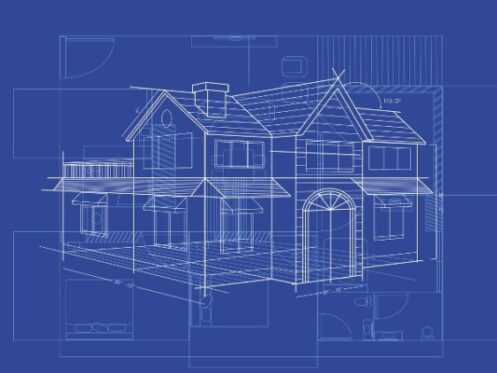Around here, we’re committed to the whole home approach to comfort. We know it works because we’ve seen it work. Again, and again. In-home after-home around Atlanta. Every. Single. Day.
But what is the whole home approach anyway? And why is it so effective?
In this blog, we’ve discussed the elements of the whole home approach at considerable length. For example, we’ve covered the building envelope, air sealing, ductwork installation, and HVAC system sizing. What we haven’t done is show you how it all fits together into a cohesive strategy for achieving consistent indoor comfort.
Let’s dig in.
It’s like a three-legged stool.
The whole home approach consists of three elements:
- The envelope, which refers to the thermal and air barrier separating your home from the outdoors
- Ductwork, which circulates and distributes air throughout your home
- HVAC equipment, which, at a minimum, heats and cools indoor air according to your thermostat setting
You might think of these elements as a three-legged stool. Take away one or two legs, and the stool becomes useless.
Traditionally, HVAC contractors have focused primarily on the third “leg” of the stool (equipment) and secondarily on the second (ductwork). To this day, most folks in our industry don’t think too hard about the building envelope and how its overall integrity affects the work they do.
Speaking of the envelope…
Your home’s envelope keeps air and heat inside – and outside.
By “envelope,” we’re referring to the continuous air and thermal barrier that separates your home from the outdoors. You might think of it like your home’s jacket (i.e., it keeps warm air indoors during the winter), except that your home also “wears” the envelope during the summer to keep cooler air inside.
In any case, your home’s envelope has an enormous impact on your ability to maintain a comfortable temperature and humidity levels.
- Insulation serves as your home’s primary thermal barrier. Ideally, you’ll have it above, below, and surrounding your living space to minimize the passage of heat between your home and the outdoors.
- Building materials, caulk, and weatherstripping around windows and doors help prevent the passage of air between your home and the outdoors. These elements form your home’s air barrier, a part of the envelope that can be supplemented with foam during an air sealing session.
These barriers envelop your home. Thus, we refer to them as an envelope.
So, what do they have to do with HVAC and the whole home approach? For one thing, a home with a tight envelope might require a smaller air conditioner than one with a leaky envelope. If an HVAC contractor doesn’t take the time to determine, say… the insulation values in your attic or the amount of air leakage between your crawlspace and the downstairs bathroom, how will they know they’re recommending an air conditioner with the proper capacity?
You might end up with an oversized AC, which can lead to a whole host of problems.
Or what about wintertime? A contractor who fails to assess the integrity of the envelope could sell you an oversized furnace. That causes problems, too.
That’s why the whole home approach always considers the attributes of your home’s envelope. Sometimes, it makes sense to beef up the quality of your envelope by sealing leaks or adding insulation. Other times – and when replacing an HVAC system is a priority – it makes more sense to install a new unit that performs well under existing conditions.
What’s important is that you assess the quality of the envelope in the first place.
Ductwork helps you score additional wins… or additional losses.
The second element of the whole-home approach is ductwork. And what we’re concerned with is how effectively it delivers air to the different areas of your home. Factors that affect ductwork effectiveness include:
- Size: Ducts need to be the right size for your home and your HVAC system. Otherwise, they might not distribute air evenly. In cases where they’re too small, they can even harm your HVAC equipment. There’s a proven method for sizing ductwork. It’s called Manual D, and we use it.
- Type: A lot of old houses have uninsulated metal ducts. These have tendency to sweat during the summer, leading to home damage or even mold inside the ducts. Insulated ducts are preferred because they tend not to sweat, and they minimize unwanted heat loss and heat gain. Both insulated hard pipe and flexible ducts can be good options, but what matters is the…
- Installation: Poorly installed ducts cause all sorts of problems. Sagging flex ducts inhibit proper airflow. Poorly connected hard pipe bleeds air and costs you money. If your ducts aren’t installed properly, you’re probably not going to be comfortable.
- Leaks: Most ducts in most homes leak big time. Combatting that problem involves extensive analysis and hands-on duct sealing work. At PV Heating, Cooling & Plumbing, we aim for 4% duct leakage or less. It’s ambitious but achievable.
Why does the whole home approach focus on ductwork in addition to HVAC system specs? Because even the fanciest, high-SEER, feature-packed air conditioner will fail to perform if you’ve got leaky or poorly installed ductwork.
And a lot of homes have leaky, poorly installed ductwork.
After assessing your envelope and your ductwork, we can start talking about HVAC.
By now, it’s probably becoming clear why your home’s envelope and ductwork have a profound impact on HVAC performance. A home with a sub-par air barrier and leaky return ducts might be humid during the summer, even while the AC is doing its thing. At the same time, a home with minimal attic insulation might always feel cold during winter, no matter the thermostat setting.
There are all sorts of things that can make you uncomfortable – or more comfortable – that have little to do with HVAC systems themselves. Thus, the whole home approach as opposed to, oh… selling you a new air conditioner that’s identical to your current one. Just because.
To be sure, HVAC system selection still matters big time. Even in a home with a tight envelope and quality ductwork, an oversized air conditioner might fail to remove enough humidity, leaving you sweaty and uncomfortable during peak summer! That AC needs to be the right size no matter what.
Ultimately, none of the three elements of the whole home approach should be considered in isolation. You’ve got to consider all of them to achieve optimal indoor comfort throughout the year.
A word about indoor air quality
One of the fringe benefits of the whole home approach is improved indoor air quality. Why? Because when you apply the whole home approach, you:
- Seal up leaky ducts, preventing crawlspace or attic air from entering your living space
- Improve your home’s air barrier, keeping polluted or allergen-laden outdoor air from getting inside your home
- Reduce relative humidity levels during summer by installing right-sized air conditioning systems; this makes it almost impossible for mold to grow and dust mites to proliferate
- Close air leaks that allow dry air to infiltrate during the winter, reducing the need for humidifiers (and providing relief for your scratchy throat!)
Needless to say, all of these improvements further increase your overall comfort.
So, why does the whole home approach keep you so comfortable?
Because it accounts for all of the factors that influence comfort. Full stop.
HVAC equipment alone doesn’t account for all those factors. Neither does insulation. Or air leak sealing. Or ductwork insulation.
But taken together, the three pillars of the whole home approach help you figure out why you’re uncomfortable, identify problem areas, and address them as needed. It’s a powerful formula.
Luckily for you, it’s also PV Heating, Cooling & Plumbing‘s MO.

